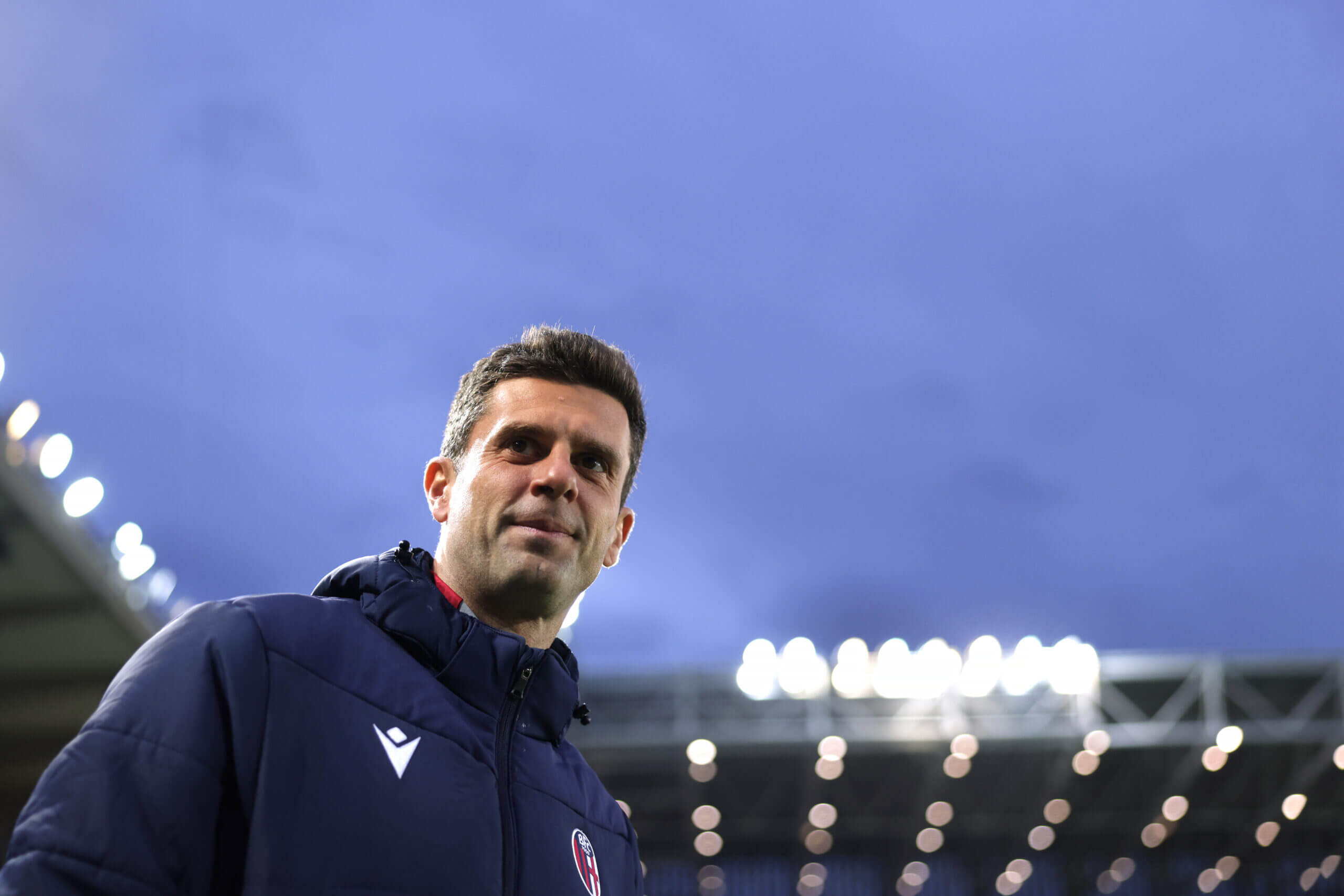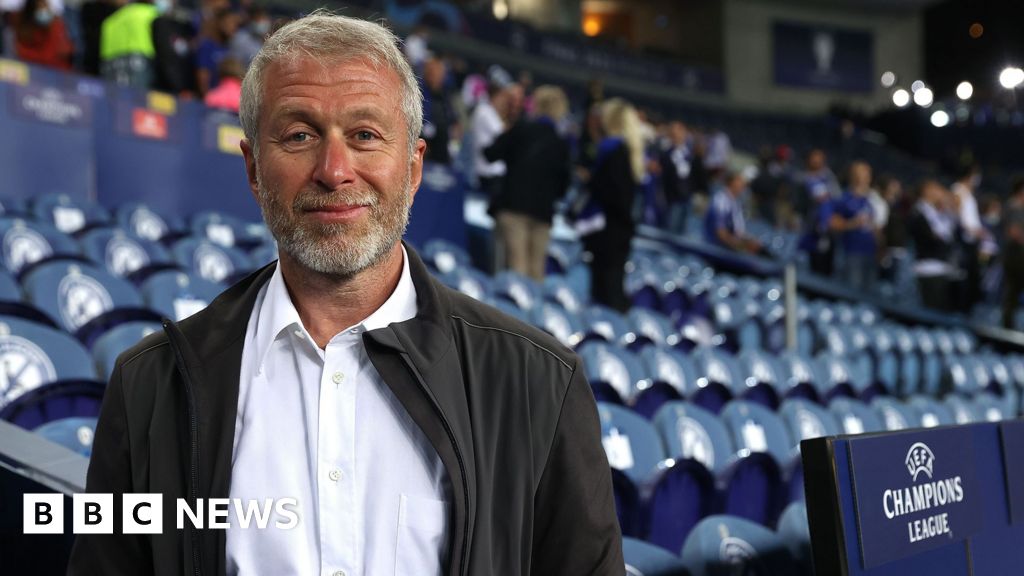
Football’s best up-and-coming managers: Thiago Motta, a fascinating tactician
- Sports
- March 25, 2024
- No Comment
- 133
This is the first article in a six-part series looking at some of European football’s most innovative up-and-coming managers.
Thiago Motta knows a thing or two about success.
When your CV includes two La Liga titles, one Serie A title, five Ligue 1 titles and two Champions League winners medals, you tend to command instant respect within a dressing room.
That said, few people need reminding that a successful playing career does not directly translate to a successful coaching career — so, what of Thiago Motta, the manager?
The 41-year-old has transformed Bologna from Serie A strugglers to one of the most aesthetically pleasing sides in Italy. With just nine games remaining this season, the Rossoblu sit in fourth place and are within touching distance of a Champions League spot for the first time in 60 years.
Motta’s stock has never been higher, but persistence and endeavour during difficult periods have already shaped his early managerial career.
Life as a top-flight coach got off to something of a false start after Motta was sacked after just nine games at Genoa in December 2019. It was not until the summer of 2021 that he had a full season to fully display his coaching credentials by keeping relegation-favourites Spezia in Serie A in an against-all-odds campaign.
A move to Bologna followed in September 2022, where things did not start according to the script after taking over from much-loved Sinisa Mihajlovic in controversial circumstances. Winless in his first four games, Motta had to gradually earn the trust of the Bologna fans, repaying their faith by leading the club to a ninth-placed finish in 2022-23 — the club’s best for over 10 years.
With the support of Giovanni Sartori (technical director) and Joey Saputo (Bologna’s owner), Motta has been entrusted to put his tactical ideals into place — but what exactly are those tactical ideals?

GO DEEPER
Is Thiago Motta the next great coach? From mocked ideas to transforming Bologna
Motta was not shy in sharing his philosophy during his first coaching role with PSG’s under-19s squad in 2018. It was here that he garnered unnecessary derision for discussing a 2-7-2 formation — which was erroneously interpreted as a structure spanning from back-to-front, rather than his intended left-to-right.
“I count the goalkeeper as one of the seven players in the middle of the pitch,” Motta said. “For me, the striker is the first defender and the goalkeeper the first attacker. The goalkeeper starts the play with his feet and the attackers are the first to put pressure to recover the ball.”
It is fair to say that Motta has since successfully moulded Bologna in his image.
This can be seen in the data below when looking at the Rossoblu’s playstyle evolution, which breaks down a team’s metrics compared with the top seven European leagues.
In specific reference to Motta’s philosophy, you can see a notable uptick in Bologna’s defensive work rate from the front since 2022-23, rarely allowing the opposition to build a sequence of passes before making a tackle (Intensity, 80 out of 99).
As a consequence, Bologna’s defensive foundation is one of the strongest in Europe this season (Chance prevention, 92 out of 99), with just 0.8 non-penalty expected goals conceded — a rate bettered only by Torino, Juventus and Inter Milan in Serie A.

The manner in which Bologna like to build out from the back (Deep build-up) is particularly interesting.
Most commonly setting up in a fluid 4-2-3-1, Motta encourages his centre-backs to push forward and act as a pivot player when in possession — in a similar way you might see Manchester City’s John Stones rolling into midfield.
With goalkeeper Lukasz Skorupski trusted as the “first attacker” within build-up, the core idea is that there should always be a free man to pass to when progressing the ball through the thirds.
An example of this can be seen from the first minute during Bologna’s game with Inter Milan earlier this month. As Jhon Lucumi has possession, fellow centre-back Sam Beukema ventures into a central area ahead of the ball to provide a passing option on a different attacking line. Beukema’s positioning helps Lucumi to receive the returned pass in space before releasing right-back Stefan Posch down the right flank.

Later in the first half, it is Lucumi who pushes into midfield to receive the ball as Bologna form a back three — this time with midfielder Michel Aebischer (20) dropping in. On this occasion, Lucumi does not receive the ball, but his positioning drags an Inter player with him to make space elsewhere, with Bologna continuing to have a free man as they build out.

Where Bologna differ from Pep Guardiola’s Manchester City is that Motta encourages both centre-backs to drift into midfield, with full-backs tucking inside to be… fully back.
Whether it is Lucumi, Beukema, or 21-year-old starlet Riccardo Calafiori, this approach is foundational to the fluidity of Bologna’s play and relies on a strong technical profile among Motta’s centre-backs.

In his UEFA Pro Licence thesis, titled “The Value of the Ball”, Motta discusses collective “technical trust” as a key part of his philosophy, where each player is given the freedom to make decisions that they believe are most beneficial to the team in a given situation.
Unsurprisingly, possession is central to the decisions that are made.
Only Napoli boast a higher share than Bologna’s 58 per cent possession in Serie A this season, with Motta keen for his side to patiently work an opening with their dynamic positional rotations.
As shown by this season’s playstyle wheel, Bologna’s high “Circulate” ranking shows that Motta’s side are not quick to progress the ball forward, but will instead make short, sharp passes to move the opposition structure and bait the press before working an opening — not dissimilar to Roberto De Zerbi’s Brighton.

Motta is also a keen admirer of Marcelo Bielsa’s vast body of work and will frequently focus on third-man combinations and off-ball running as a key part of Bologna’s progression upfield.
One example can be seen during Bologna’s game against Roma this season, where Beukema attracts pressure on the right touchline with team-mates gathering closely. A blindside run from midfielder Remo Freuler sees Beukema thread the ball into the space to transition forward at speed, with winger Dan Ndoye subsequently cutting it back for Nikola Moro to finish the fast break that Bologna have curated for themselves.

Such penetrative runs from Bologna’s forwards are a key theme in Motta’s style. As you can see from their “Central progression” rating (98 out of 99), Bologna are not frequent crossers of the ball — only Frosinone average fewer than their 13.4 crosses per 90 — but will use the pace and trickery of dangerous wingers in Ndoye, Alexis Saelemaekers and Riccardo Orsolini to drive forward and shoot or create from advanced positions.
Ultimately, Bologna’s key attacking threats run through the centre of the pitch, with versatile Scotsman Lewis Ferguson able to drift into a No 10 position behind the technically gifted Joshua Zirkzee.
The pair have forged a potent partnership together and are responsible for over one-third of Bologna’s goal involvements in Serie A this season.
“I play close to Joshua. Technically, he’s really, really good,” Ferguson told The Athletic last year. “He’s strong, fast, powerful. He’s got everything you’d want in an attacker. It’s enjoyable to play with him. We bounce off each other. If he makes one run, I make another.”

GO DEEPER
Lewis Ferguson: The not-so-secret ingredient behind Bologna’s impressive form
While Zirkzee’s 10 Serie A goals (eight non-penalty efforts) lead the way within the Bologna squad, the 22-year-old Dutchman is not your typical No 9. Beyond his technical ability, Zirkzee is more appreciated by his team-mates for his ability to bring others into play — regularly dropping off into a false 9 position or pinning a centre-back to release runners ahead of him.
Judging him on his goals alone — he is yet to register an effort from inside the six-yard box this season — would be to misunderstand his role within Motta’s system.

Bologna’s recent goal against Empoli brings together a lot of the discussed themes in how Motta likes his side to play in the opposition half. As Empoli’s centre-back plays the ball into a central area, Moro pounces to nick the ball away. As it falls to Zirkzee, he pins the defender with his back to goal before flicking the ball to Orsolini making the overlapping run. The Italian drives into the box and converts emphatically.
From regaining possession high up to breaking the deadlock in no more than seven seconds.

If Motta is able to guide Bologna to a top-four spot this season (fifth place may also suffice), the prospect of leading the Rossoblu into their first European Cup campaign since 1964-65 will surely be the highlight of Motta’s early managerial career.
The reality is that Motta’s contract expires in the summer and there are already plenty of top European clubs who are in the market for an exciting young manager ahead of the 2024-25 season. Bologna CEO Claudio Fenucci was understandably deflective at the possibility of losing his coach in the coming months.
“Thiago is very happy in Bologna,” said Fenucci in a radio interview recently. “It’s as if he had a longer contract than he actually has.”
Whatever the outcome in the summer, Motta has shown himself to be one of the most attractive managerial prospects in European football.
Wherever he goes, success typically follows.
(Top photo: Jonathan Moscrop/Getty Images)
#Footballs #upandcoming #managers #Thiago #Motta #fascinating #tactician









